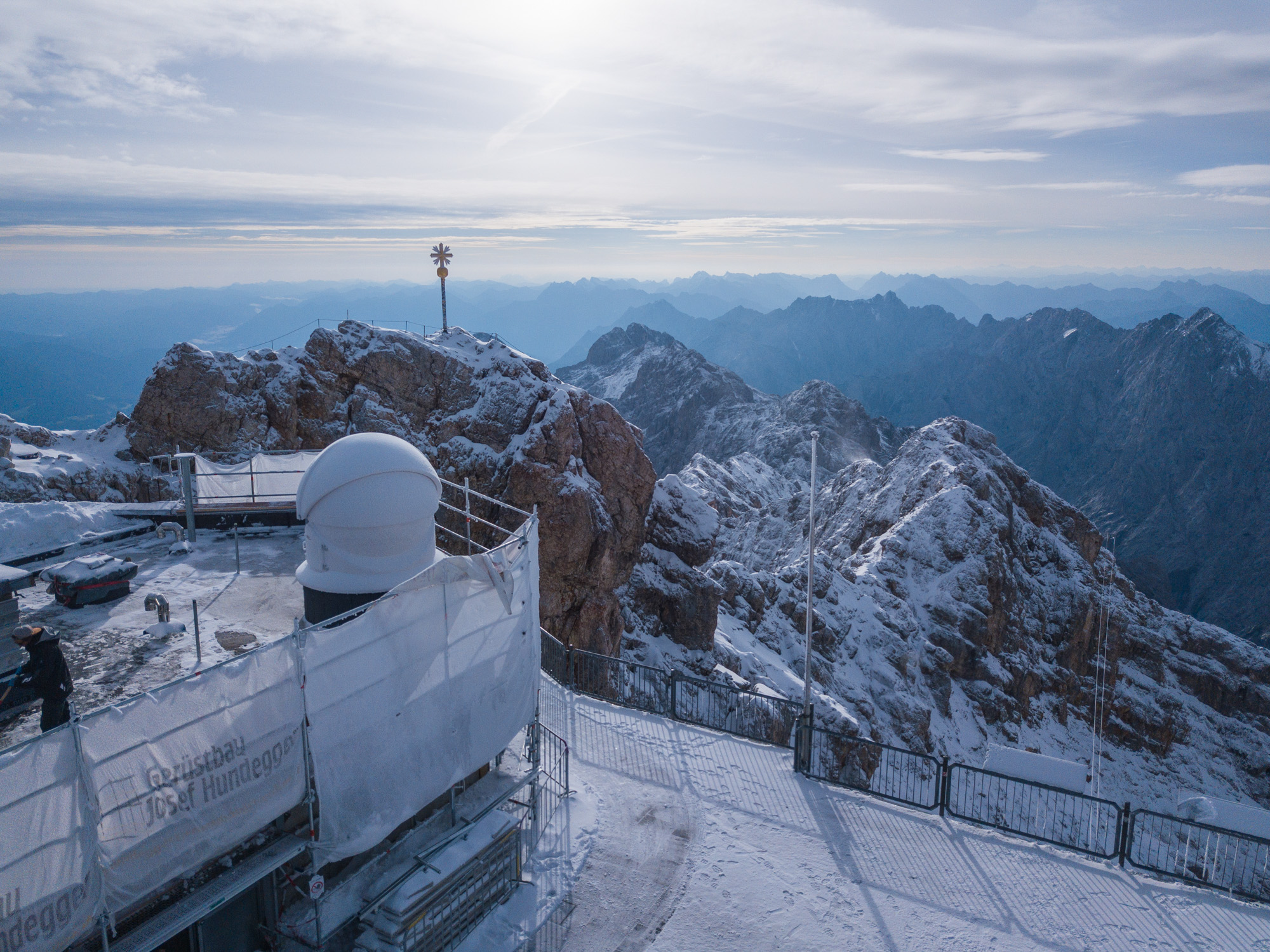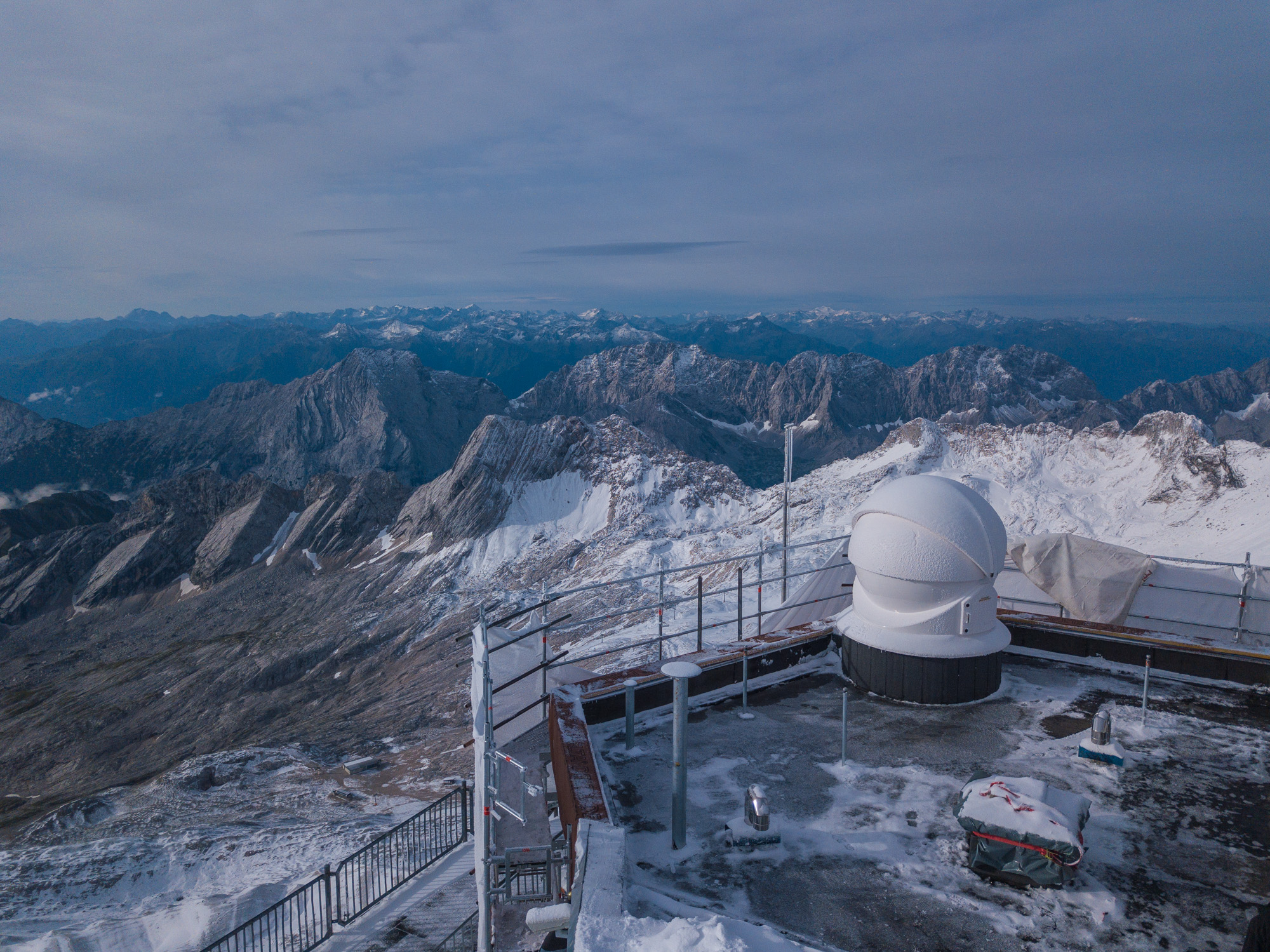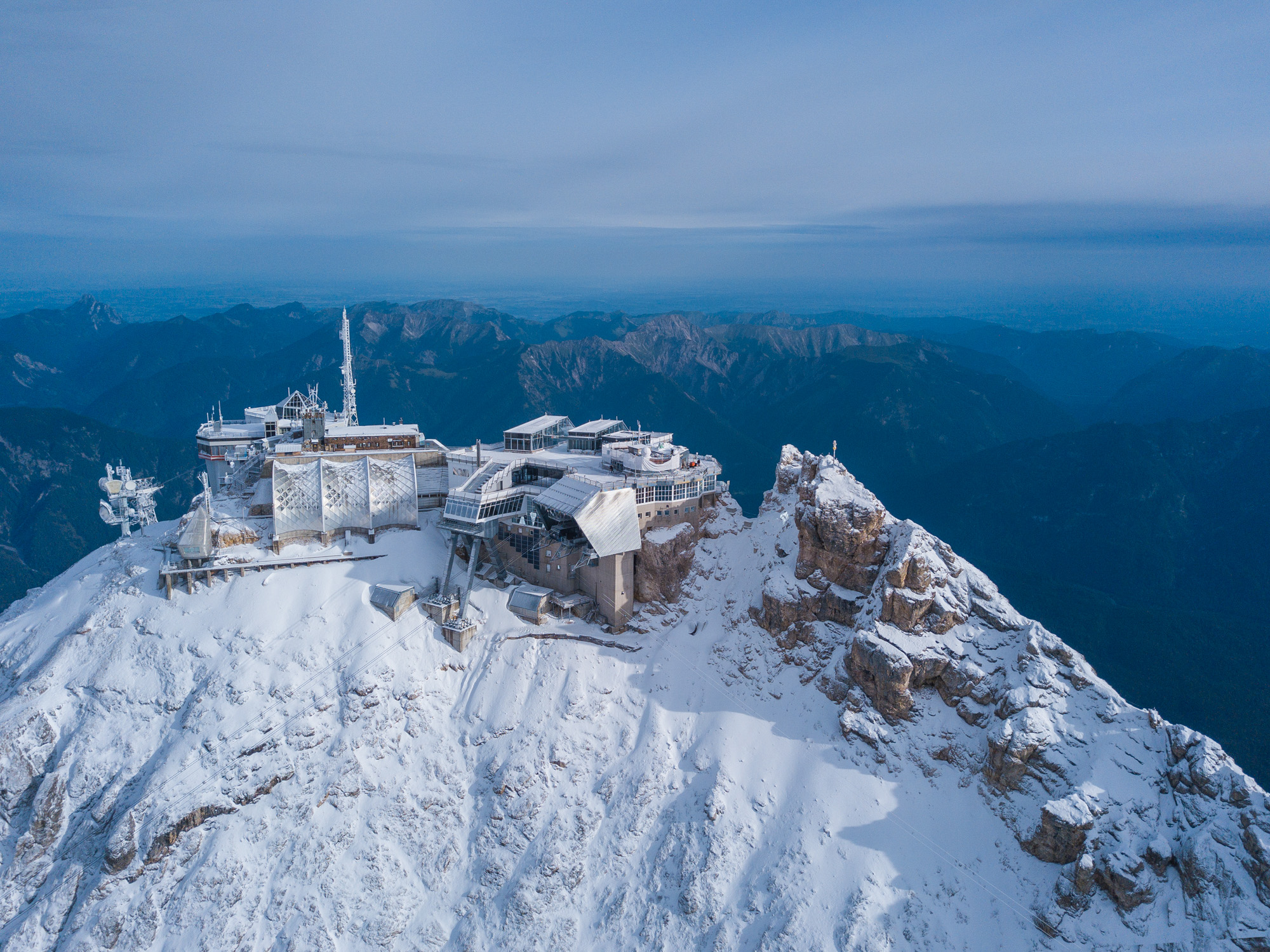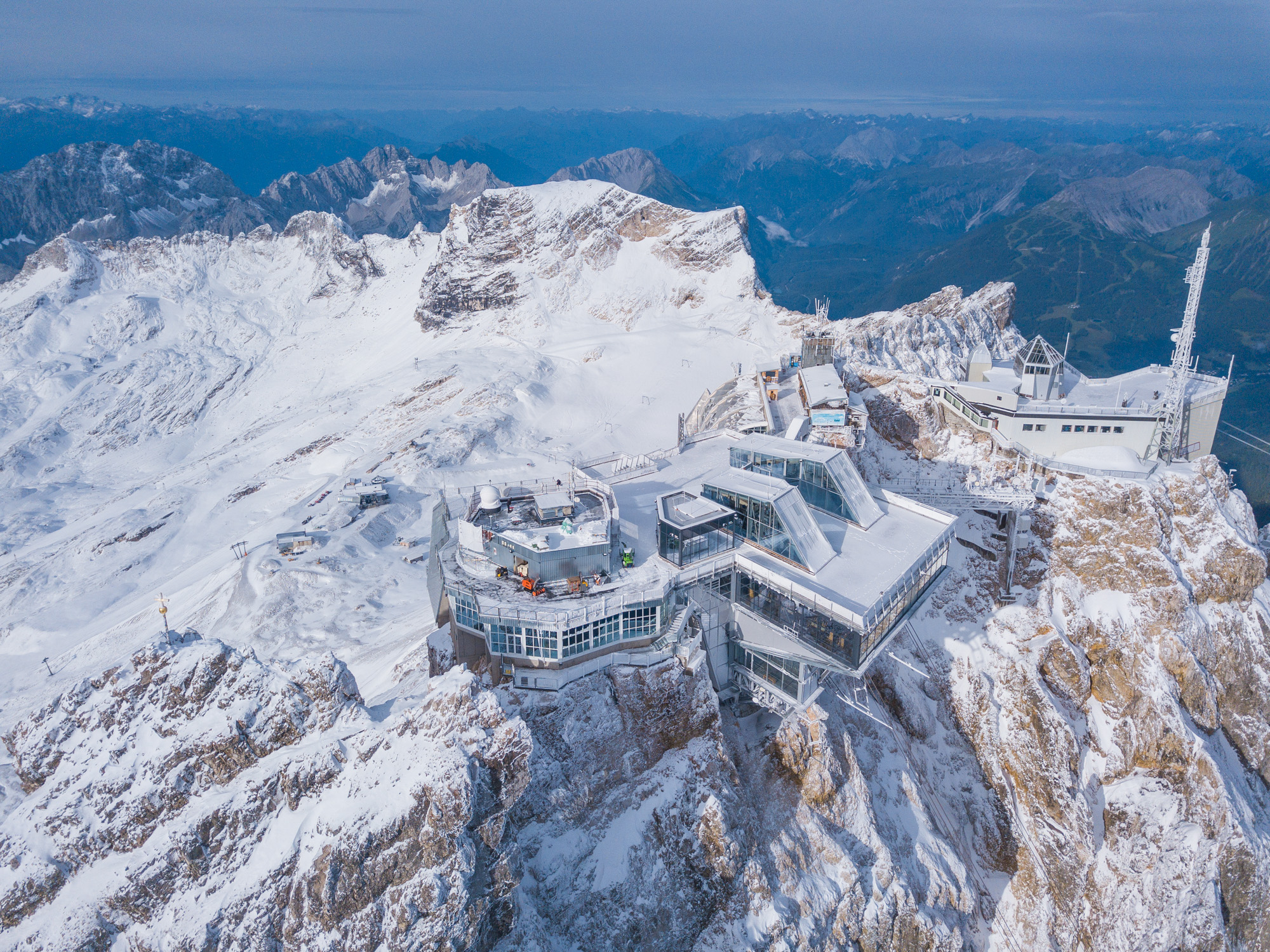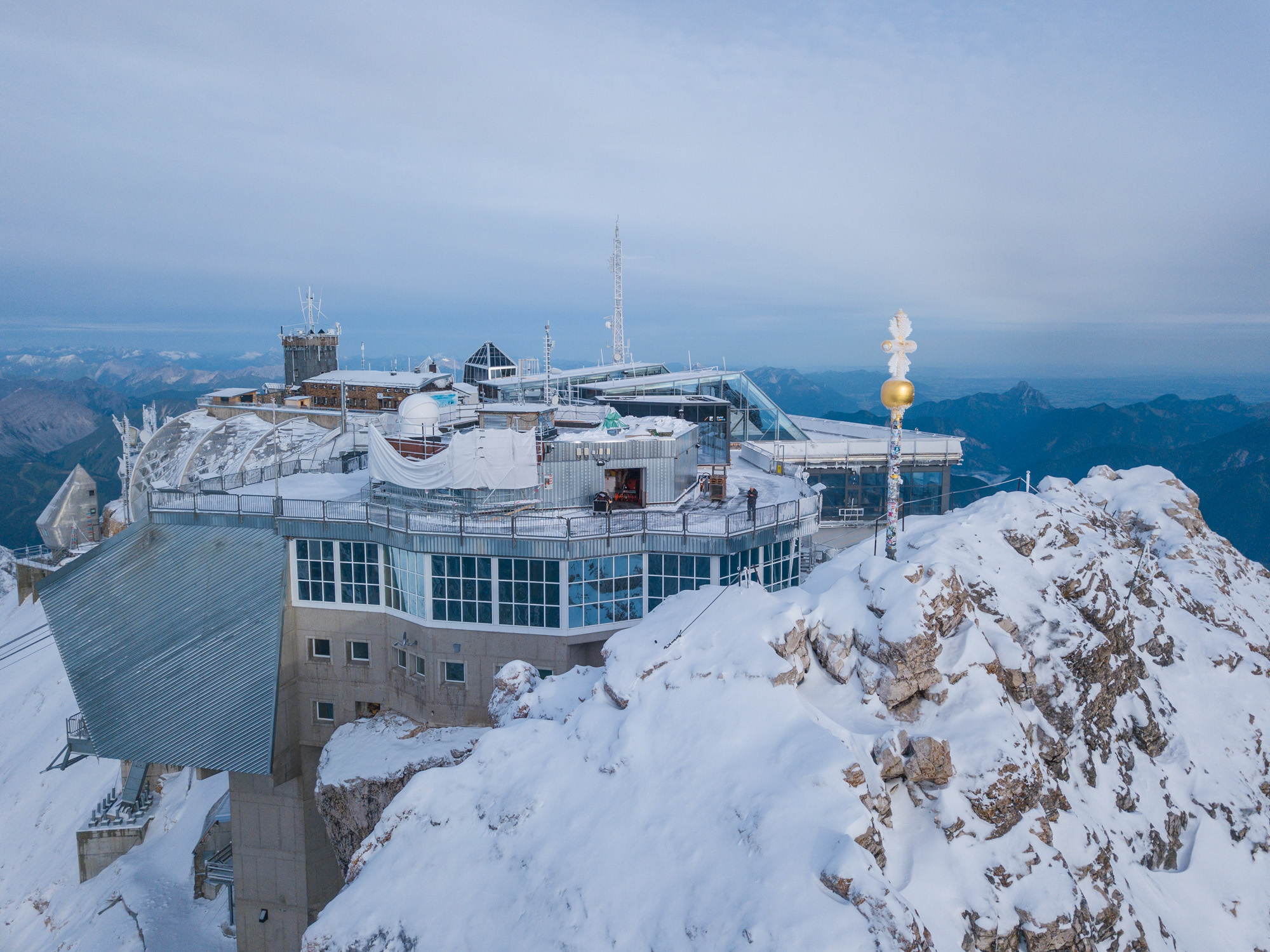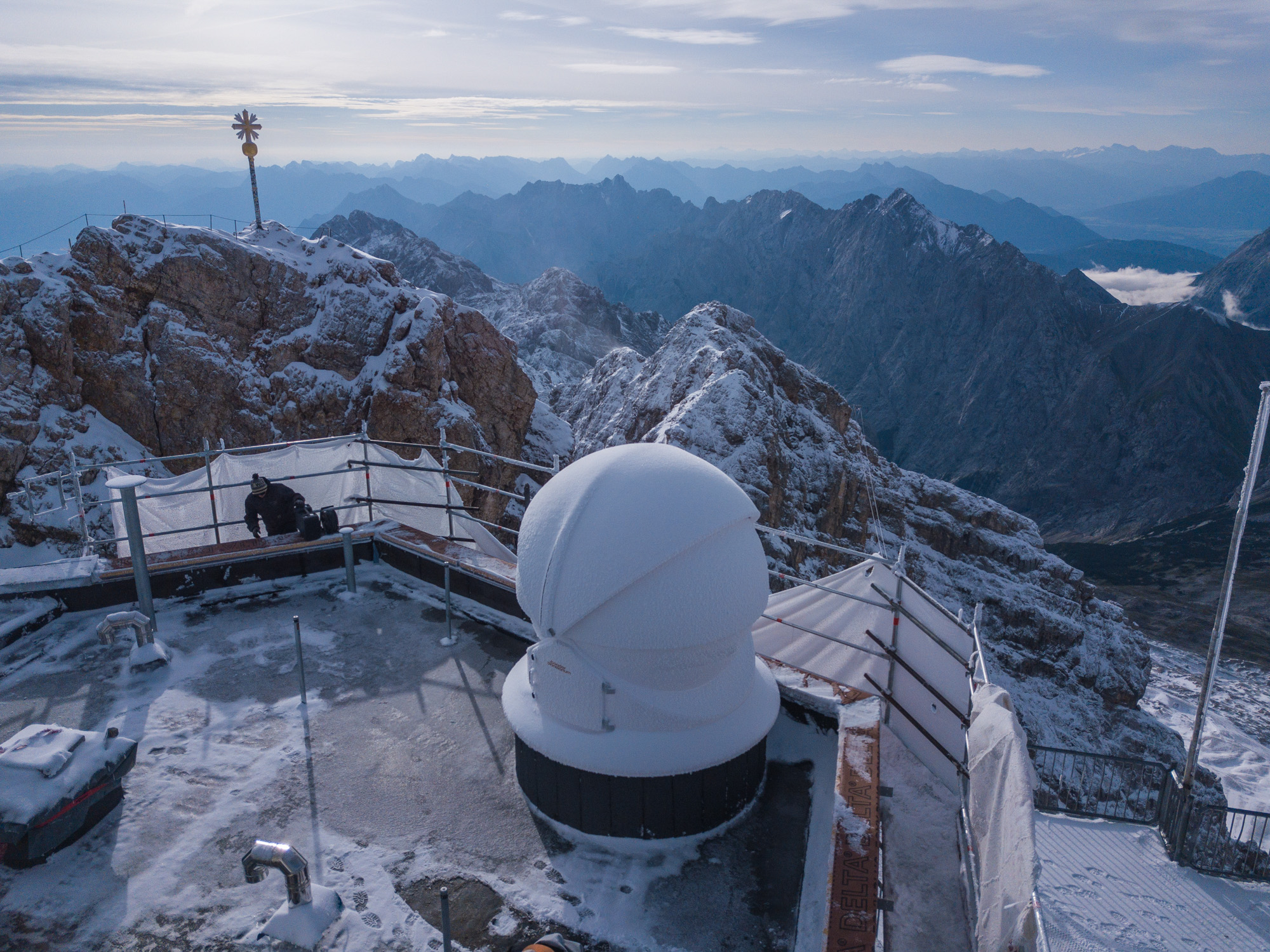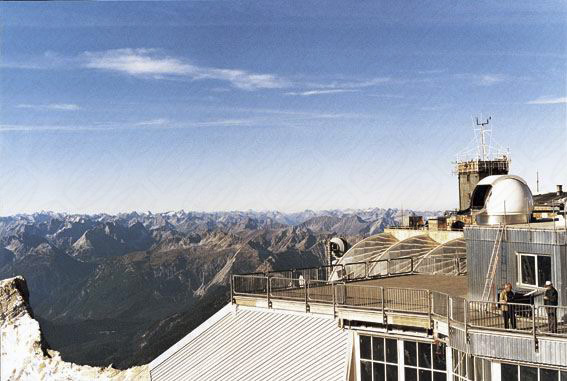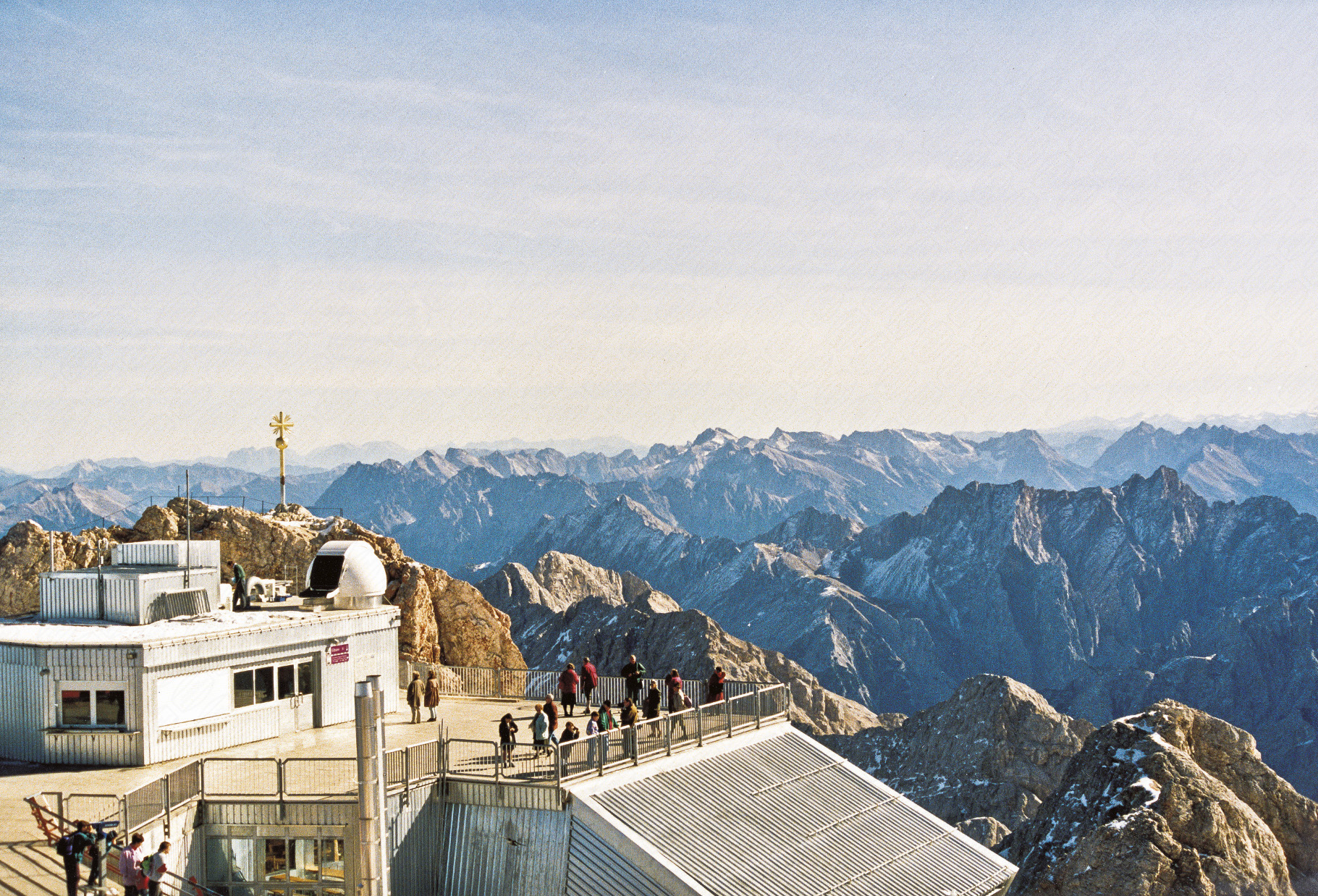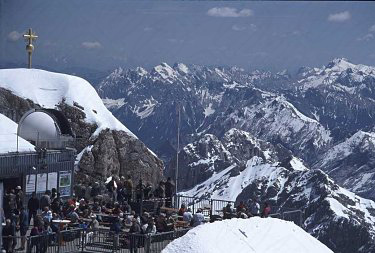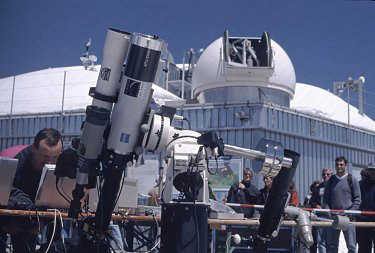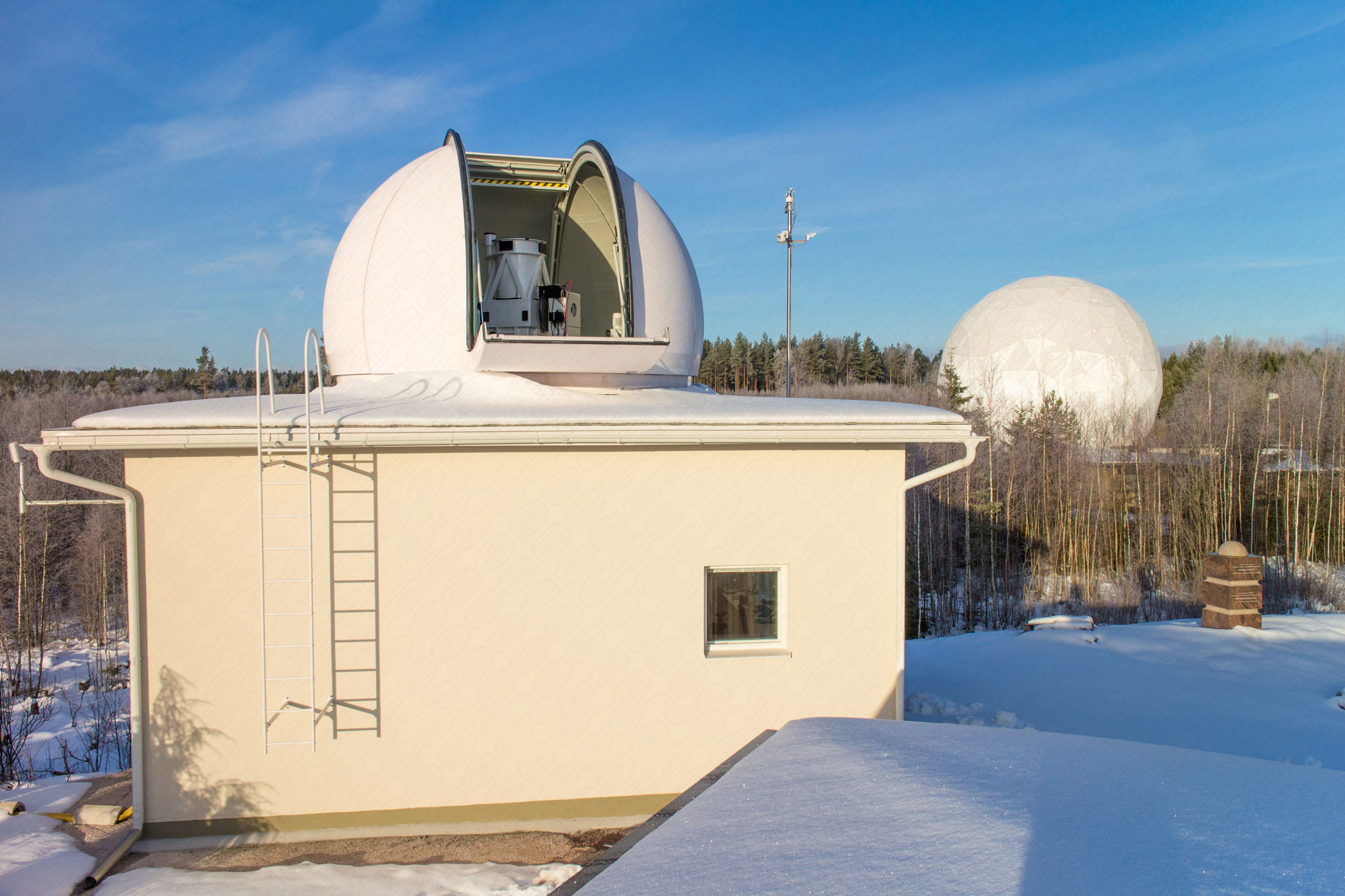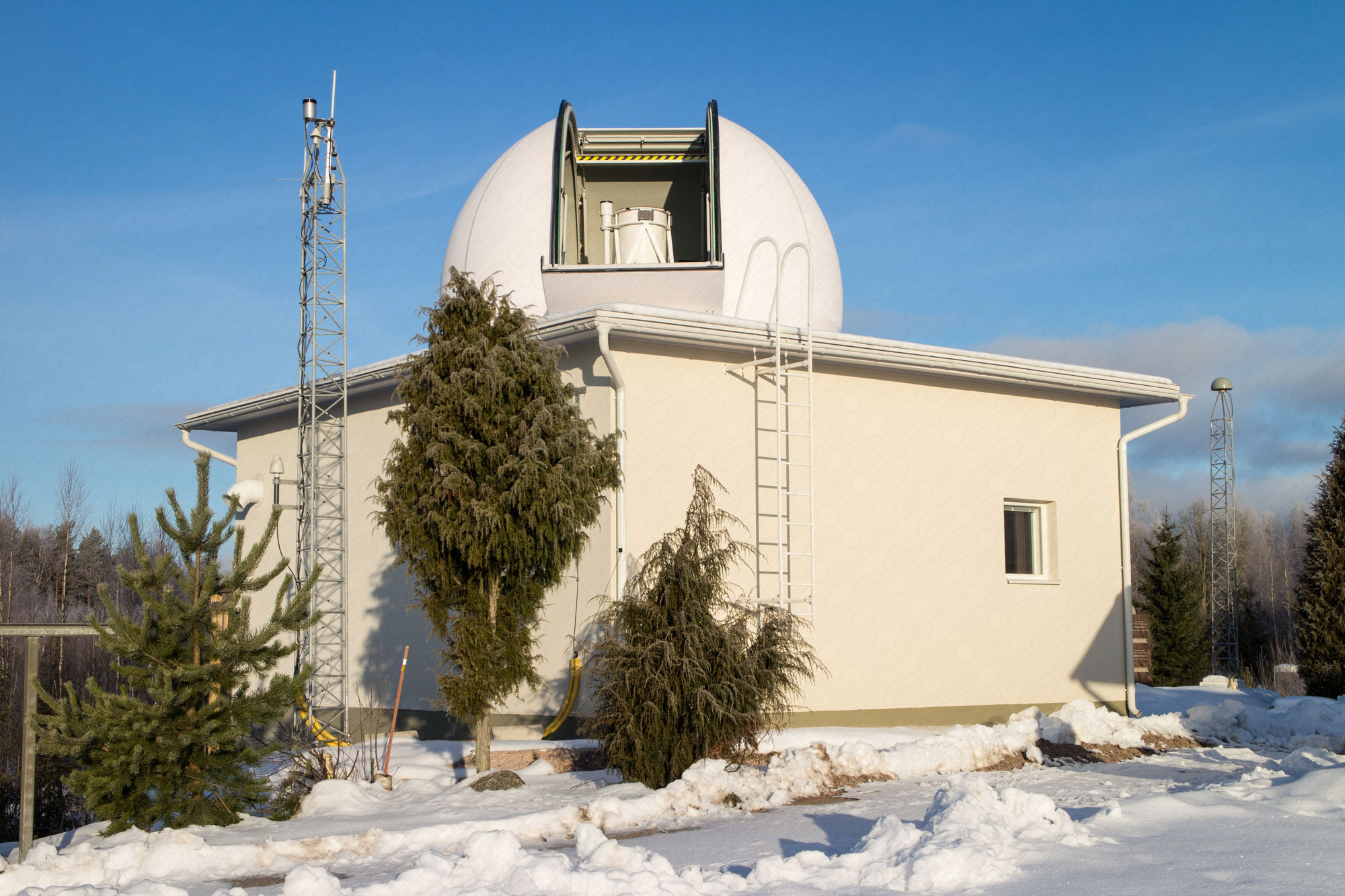Baader Dome again at Germany's highest point
The Mt. Zugspitze, Germany's highest peak, is not only an impressive scenic attraction but also a location that allows for the implementation of cutting-edge technology and groundbreaking scientific research due to its unique geographical and climatic conditions.
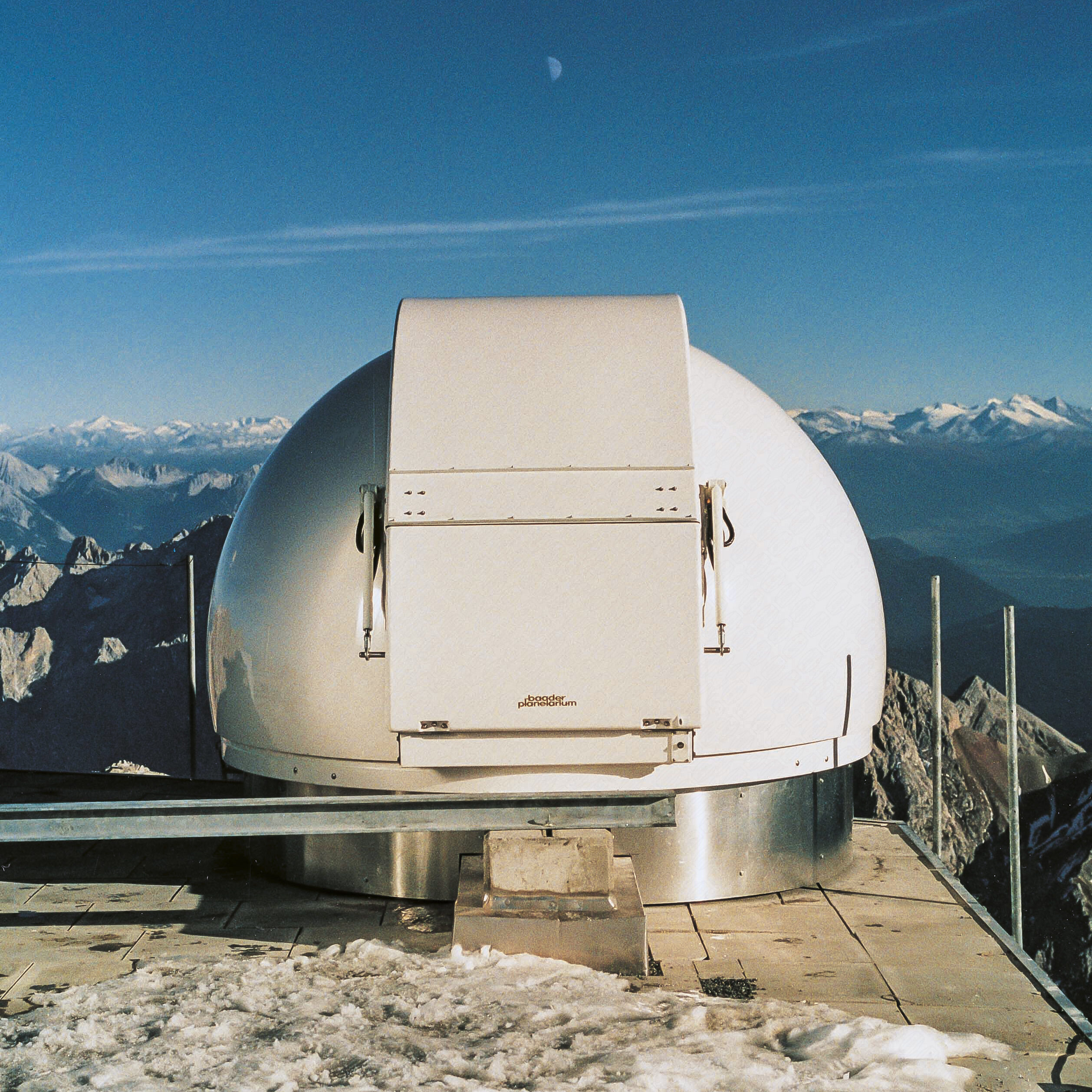
Already in 1994, we installed our first 2.6-meter observation slit dome at the Zugspitze. This dome was specifically designed for the extreme weather conditions at the summit and has demonstrated exceptional performance for over 29 years since its installation. Further information and detailed customer reviews can be found below.
Unique in Terms of Reliability and Technology
This year, 2023, we installed a technically advanced 2.3m Baader AllSky Dome at the Zugspitze. The 180° opening AllSky Dome replaces the previous classic slit dome, as the new instruments have different requirements for the dome. Unlike the earlier measuring instrument (a heliostat with a 400 mm aperture), the new instruments require a fully opening dome, as two separate sun tracker instruments now have to operate side by side, and they could not both see through the slit of a classic dome.
The new AllSky Dome allows scientists from KIT (Karlsruhe Institute of Technology) on the Zugspitze to collect important atmospheric data and conduct critical research (see also the German Tagesschau report: New Research Dome for the Zugspitze). However, both domes share our unique feature of designing professional observatories known for their robustness and longevity, even under extreme weather conditions, such as the maximum recorded wind speed of 336 km/h at the Zugspitze.
A video of the dome installation in July 2023 can be viewed here::
[br]
[br]
Alter Beitrag: 2.6m Klassik-Kuppel, Zugspitze 1994
Auszug aus einer Beurteilung vom Mai 2014 - nach 19 Jahren Betrieb von Dr. Ralf Sussmann:
Die Hard- und Software der Kuppel gewährleisten seit nunmehr 19 Jahren einen reibungslosen und zuverlässigen Messbetrieb unter extremsten meteorologischen Bedingungen an unserem Atmosphärenobservatorium auf dem Zugspitze-Gipfel.
Die im Laufe der Jahre erforderlichen Nachrüstungen auf den aktuellen Technikstand verliefen problemlos und halfen die Funktion des Systems aufrecht zu erhalten bzw. diese sogar noch zu verbessern.
Das gesamte Baader-Team haben wir über alle Jahre bei spontan auftretenden Problemen ausnahmslos hilfsbereit erlebt wie keine weitere Firma. Durch die stets guten Erfahrungen mit der Firma Baader Planetarium hatten wir uns auch für den Kauf zweier weiterer Baader- Kuppeln für Laser-Radar- Anwendungen entschieden. Wir können die Firma Baader Fachkollegen wie Hobbynutzern jederzeit uneingeschränkt weiter empfehlen.
- Dr. Ralf Sussmann, Leiter der Forschungsgruppe „Atmosphärische Variabilität und Trends“ -
{{block type="mageworx_downloads/link" id=280 title=""}}
2.6 Meter Kuppel - Zugspitze
- BAADER 2,6m Beobachtungskuppel aus hochfestem Glasfaser-Polyester
- Standort: Zugspitze 2965 m über Normal Null (Station am Gipfelkreuz)
- Windgeschwindigkeit: bis zu 300 Stundenkilometer
- Instrument: Heliostat mit 400 mm Öffnung
- Seit 1994 auf der Zugspitze
- Nutzung: Vollautomatische Sonnen-Absorptionsspektrometrie
- Betreiber: KIT / Helmholtz Gemeinschaft
Seit 1994 steht an diesem Ort eine 2,6m Kuppel aus unserer Fertigung und dient als Schutz für ein Atmosphären-Spektrometer des IFU / Fraunhofer Institut. Die Kuppel ist seitdem ganztätig im Einsatz, folgt jeden Tag kontinuierlich dem Lauf der Sonne und öffnet selbstständig Tor und Horizontklappe sobald die Wetterdaten dies zulassen. Die höchsten gemessenen Windgeschwindigkeiten lagen wiederholt bei 330km/h. Es ist noch kein einziger Ausfalltag aufgetreten, der empfindliche Spektrograph ist vollkommen geschützt ohne noch so geringen Wassereinbruch. Das Gewerk sieht noch genauso aus wie am ersten Tag nach der Montage - wie die Bilder bezeugen können. [br]
Finnish Geospatial Research Institute (FGI, formerly known as the Finnish Geodetic Institute) of the National Land Survey of Finland is operating a geodetic research station at Metsähovi, Kirkkonummi, Finland (60.2N, 24.4E). Metsähovi is one of a few geodetic core sites worldwide where all major space-geodetic measurement systems, including satellite laser ranging, are co-located.
Satellite laser ranging (SLR) is a measurement technique where ultra-short laser pulses are transmitted through a telescope that is tracking a satellite equipped with retroreflecting mirrors and then subsequently received back at a receiver attached to the telescope. With precise measurement of the time of flight of the laser pulse, several important geodetic parameters can be obtained including: variations in Earth's gravity field, location of the center of the mass of the Earth, and scale of the terrestrial reference frame. SLR is also used in validation of orbits of several types of satellites including navigation and remote sensing satellites.
FGI has build a new, modern, SLR system in Metsähovi in 2013-2016. As part of that project a new observatory building was built to house the new SLR system and a stateof-the-art observatory dome was required. Requirements for the dome were strict. Here I list some of the requirements for the dome:[br]
- The dome needs to be able to operate in all weather conditions where SLR operations can be performed. This includes operating during daytime, when the dome is used as a sun-shield for the telescope.
- It needs to have low maintenance needs
- It needs to have a long lifetime
- It needs to turn fast (SLR also tracks low-flying satellites)
- For added safety it needs to be able to autonomously (and with it's own power) close in case of rain and/or heavy winds
- It needs to be tightly sealed while closed to allow fast resumption of operations after the weather improves.
We talked to several manufacturers of observatory domes and also to other SLR observatories about their experiences with different manufacturers. It soon became clear that Baader Planetarium GmbH produces the domes best suited for our requirements.
We selected from Baader's products a 5.3-meter fiberglass reinforced polyester observatory dome (up and over shutter -type) with geared tooth drive. The dome was built and installed in 2014. In addition to the dome itself, we also ordered, e.g., an integrated weather station working together with a dehumidier system. Before describing our experiences with the Baader dome, it is important to summarize the operating environment of the dome at Metsähovi as the dome's main purpose is to protect the telescope against the environment.
Metsähovi is located in the southern Finland approximately 20 km from the sea, at an altitude of 60 m above the sea level, in a rural environment. The weather conditions at Metsähovi show characteristics of both maritime and continental climate: summer is humid and relatively warm and winter is cold. The temperature normally varies annually between -25° to +30° Celsius, with a yearly average temperature around 6° Celsius. Seasonal snow normally covers the station from December to April and yearly precipitation is around 700 mm with approximately 170 days with rain. Supercooled water rain can occur during late autumn and each summer Metsähovi receives a few hailstorms, mainly together with thunderstorms. The mean relative humidity for an average year in Metsähovi is ~80%. Fog arising from the nearby small bog and from the Baltic Sea is relatively frequent during cold summer mornings as well as during the sea-ice forming and melting season. The station sees a few storms each year with gust wind speeds up to 25 m/s, but mostly winds are around 0-10 m/s. Dust and pollen from the surrounding pine forest, especially during spring, has the tendency to cover all surfaces.

